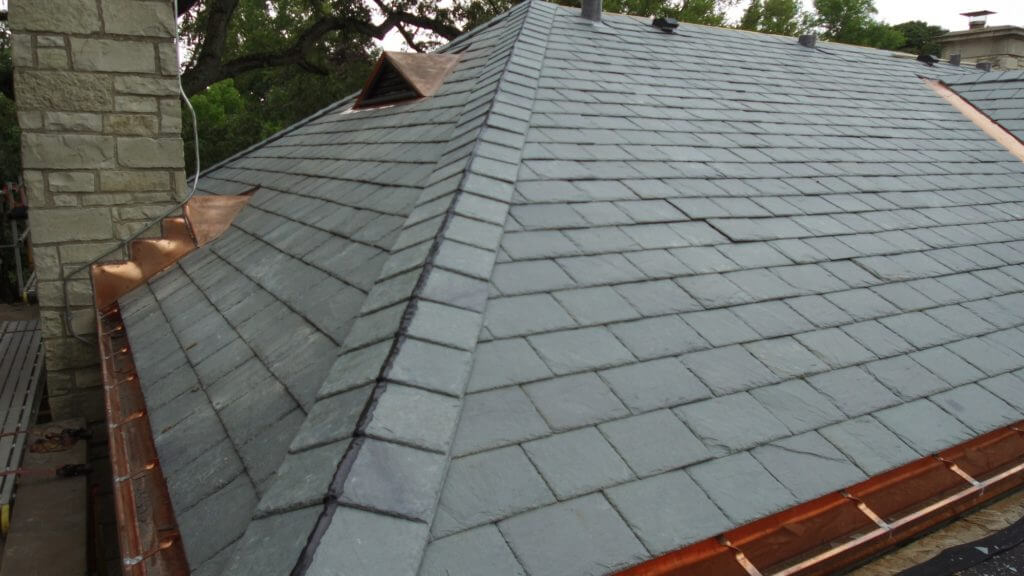

#Rubber roof tiles install#
In turn, TPO is not a DIY-friendly roofing material to install and care for.Īpart from the challenges created by heat-welding, most qualms regarding TPO start with reliability. Should those seams need repairs, you will need the specialized hot air gun once again. On the downside, heat-welding requires more skill and time compared to EPDM roof installations, thus increasing labor costs.

These heat-welded seams are low maintenance and last longer than the tape or adhesive sealants used to protect EPDM roof seams. Installing TPO typically involves the use of a hot air gun to weld any seams along the surface. A white TPO roof system can improve energy efficiency in hot climates. Image source: Central Homes Roofing What We Likeįirst introduced to the United States in the 1980s, TPO, or Thermoplastic Polyolefin, is relatively new in the membrane roofing space. Installation cost per square foot: $3.50-$9.50. A black roof also might not suit every building aesthetically. Secondly, EPDM usually comes in black, which means buildings baking in the beating sun will only get hotter with an EPDM roof. This exposes the layers underneath the rubber roofing membrane and potentially allows water to creep into the structure. With pricing between $4.50 and $10.50 per square foot, EPDM roofs are also the most affordable of the bunch.įor starters, EPDM roofs can shrink under the right conditions. A 2010 study by the EPDM Roofing Association showed that 30-year-old EPDM membrane samples could last another 20-plus years through aging tests. Of course, there’s also EPDM’s persuasive track record. Many building owners prefer EPDM because it’s fire-resistant and holds up well to hail. Many roofers prefer EPDM because it can be installed using a singular, seamless sheet for many projects as opposed to multiple, layered rolls. Polymers and definitions aside, EPDM rubber roofing is tried and true. Installation cost per square foot: $4.50-$10.50.Įthylene Propylene Diene Terpolymer, a synthetic rubber that everyone calls EPDM even though it’s a Terpolymer, not a Monomer, is technically the only roofing system among the three single-ply options we compare in this article chiefly made of rubber. Single-ply roofing EPDM roofing costs, pros, and cons Rubber shingles, on the other hand, should only be used on pitched roofs. Even so, they can also work in pitched settings as a primary material or atop an existing structure, particularly metal roofs. Rolls of rubber sheets are mainly used on flat roofs. Penetrations such as skylights, HVAC units, and chimneys will also add to costs as they introduce more roof installation complications. The thickness of said material and whether the installer fully adheres (glues, more expensive), mechanically fastens (screws, more affordable), or uses ballast (layers of stone, the most affordable), also plays a role in pricing.Īdditionally, project costs will increase if you need to tear off existing materials and add decking or insulation during the roof replacement. The final cost largely depends on the specific material. Single-ply rubber roofing costs anywhere from $4.50 and $13 per square foot. Then, we’ll explore the ins and outs of rubber shingles and whether they suit your new roof project. In this article, we’ll dig deeper into the positives and negatives of these rubber roofing materials. Each of these types of roofing comes with distinct benefits, drawbacks, and costs.įortunately, we know a thing or two about rubber roofs, and as it just so happens, we’ve already highlighted the costs, pros, and cons of EPDM, TPO, and PVC in our review of the best flat roofing materials. Rubber roofing can refer to any of three compounds of single-ply, membrane roofing materials suited for low-slope roofs – EPDM, TPO, and PVC – as well as rubber shingles. Whether you’re on the hunt for trusted flat roofing material, a more durable alternative to asphalt shingles, or even a protective layer over your existing roof, rubber very well might be your answer.


 0 kommentar(er)
0 kommentar(er)
